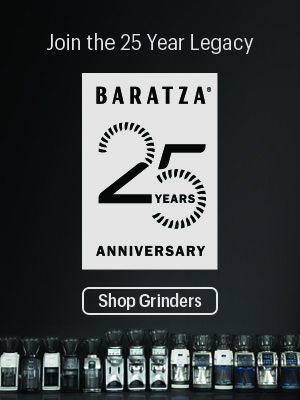Some time ago, a series of articles appeared on CoffeeGeek discussing single origin coffee. The bulk of the discussion was on Single Origin (SO) coffee as espresso and the writer, Mark Prince had some very tight definitions on what he considered Single Origin coffee to be.
“What is Single Origin? It is — simply put — one type of bean from one area of one farm (sometimes called a microlot) roasted one way.”
Further, he wrote: “If the coffee is from a collection of farms, it is not Single Origin. If the coffee is from the same farm but roasted several ways and post blended, it is not Single Origin. If the coffee is from a country with no other information, it is not a Single Origin.”
I wrote Mark to say I felt that definition was too narrow and that every roaster I know doing Single Origin coffees and espresso roasts have a much broader definition of what Single Origin is. Even my boss’ definition is broader than my own. We got into a debate about it and he invited me to dive into the subject more and write about various definitions of Single Origin. In my research I found that there were a lot of definitions and interpretations and it lead me to believe that Single Origin is a confusing term to many. Especially with regards to espresso.
Single Origin History
A person could argue that Single Origin coffee has always existed or at least existed in the minds of coffee buyers going back centuries. Perhaps many in the past felt that Single Origin meant the country of origin and instead of selling coffee as “coffee” a company would sell coffee as “Java” or “Yemen” and that was Single Origin to them and the coffee buying public at large. The most famous historical blend is Mohka Java (Moka Java, Mokka Java etc) which to many coffee buyers in 1880 was the blending of two famous Single Origin beans to create an exotic blend. Mohka was a port in Yemen and not a region. Coffee sold for export would make it to this port, and coffee bought there was often labled Mohka which for many late 19th century coffee consumers was a Single Origin coffee.
Tracing the Single Origin concept a bit closer to our time period, perhaps it really started in 1999 when the Cup of Excellence was started and the focus on individual farms was for the first time really highlighted and explained on a broad, multi-company scale. George Howell was one of the founders of the Cup of Excellence and he has said many times over the goal was to highlight individual farms doing excellent things with growing coffee.
At the time of the founding of the Cup of Excellence, Single Origin was not really a phrase used (at least I can’t find a reference to it) but it nonetheless existed as a concept. At that time, Single Origin could be held to mean one coffee farmer’s product. No thought about how it was processed (wet, dry, etc) or roasted was brought into the matter. So here is how Single Origin could be defined in 1999:
Single Origin – 1999: One coffee farm’s product, no matter how large or small their farm is, no matter how the coffee was processed, no matter how the coffee is roasted.
In 2004
So, by 2004, the definition of Single Origin might be:
Single Origin – 2004 (new) One coffee farm’s product, no matter how large or small their farm is, no matter how the coffee was processed, but roasted one specific way.
And the act of roasting with different profiles the same coffee were called a blend or an espresso roast and defined as
Single Origin Blend – 2004 (new): One coffee farm’s product, no matter how large or small their farm is, no matter how the coffee was processed, and roasted with different profiles and post blended.
In 2005
Doug Zell, co-owner of Intelligentsia Coffee, wrote an interesting and controversial blog post (internet archive link, since the original is now deleted – ed.note 2013) earlier this year where he took credit for many things in coffee, not the least of which is the concept of the micro lot. I won’t argue whether or not Intelligentsia invented the phrase or concept for coffee. I will quote Zell:
“We introduced the term and the concept of the Micro-lot to the public for the first time in November of 2005 with our Colombia Cauca Almaguer Micro Lot produced by Alciabiades Garcia. This revolutionized the industry on many fronts from the specificity of lot separation, to the prices that a grower would be paid for a coffee to what the consumer would be willing to pay for coffee. Although Cup of Excellence offered this idea in the form of an auction, we pioneered it as an ongoing part of a successful Direct Trade buying model. Many roasters, exporters, and importers worldwide now offer Micro-lots on a regular basis.”
The microlot concept brought the idea that there was a specific portion of a farm producing better coffee than other parts and to single that out would bring the best of the best. I note there still wasn’t much talk about processing though I imagine the way the coffee was processed was directly written on the roasted bags for consumers to read.
This, in my mind, created a new subcategory of Single Origin and this is where I start to differ from Prince’s definition quoted at the top of this article:
Single Origin Coffee – 2005: One coffee farm’s product, no matter how large or small the farm is, no matter how it was processed, roasted with one roast profile.
Single Origin Blend – 2005: One coffee farm’s product, no matter how large or small their farm is, no matter how the coffee was processed, and roasted with different profiles and post blended.
Single Origin Coffee – The Microlot – 2005 (new): One coffee farm’s product from one specific part of the farm, cupped and graded to find the best parts of the farm for producing coffee. No specifics on processing; roasted with one roast profile.
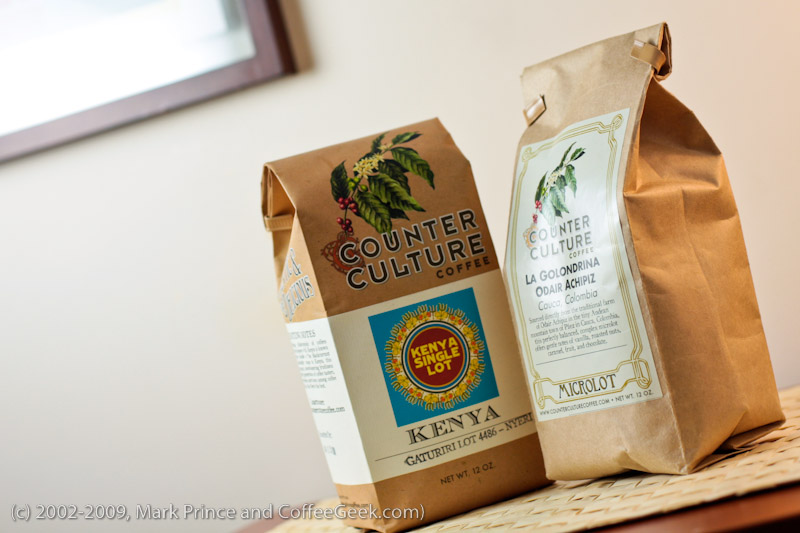
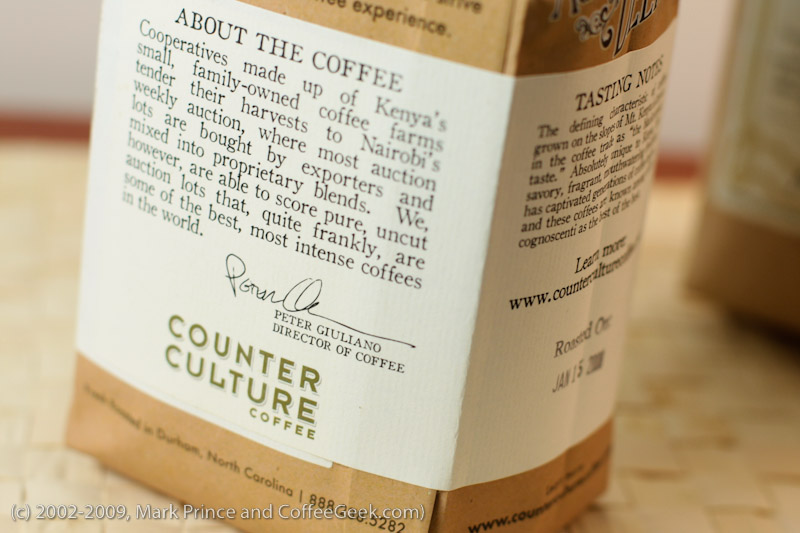
I first read the name Aida Batlle in a blog post that James Hoffmann made in 2007. I read up about her and the work she was doing as a coffee farmer and her partnership with Counter Culture Coffee and was especially interested in how Batlle was experimenting with different processing methods. As far as I know, she was the first farmer to take a premier Single Origin coffee and process it different ways (pulp natural, natural, washed, semi washed etc). Perhaps she wasn’t the first or the pioneer in this regard but she was the first I read about doing it so I list her here.
Batlle was also experimenting with the naming of coffees with trademarked, invented names, something Intelligentsia and other roasters had been doing for a while (one example, Los Inmortales from El Salvador, is sometimes a blend from different farms roasted for drip coffee). Intelligentsia’s coffee blends were just that: blends and not Single Origin. But I was confused thinking they were Single Origin for some time. So Batlle’s route into doing a similar thing (naming a coffee with a trademarked, invented name) also confused me. Was she doing something similar to Intelligenstia with their fancy trademarked names for coffee? As far as I can tell, she was not. She was crafting trademarked names to use for coffees that were still Single Origin, but the Single Origin would change from time to time and perhaps there may be several coffees bagged individually and available under the same trademarked name but from different farms. She would find and identify first rate Single Origins in her farm, with partners and at the mill, process them a certain way and sell them under trademarked names. Los Luchadores (PDF link) is one such coffee trademark. The coffee farm and source would still be identified, but it was about finding specific types of beans and specific types of processes and selling them a specific way with an innovative marketing campaign.
Batlle brought two new things to the idea of Single Origin, so some of the definitions of Single Origin changes again.
Single Origin Coffee – 2007 (new): One coffee farm’s product, no matter how large or small the farm is, processed any one way, roasted with one roast profile.
Single Origin Blend – 2007 (new): One coffee farm’s product, no matter how large or small their farm is, processed one way or several ways, and roasted with different profiles and post blended.
Single Origin Coffee – Trademarked Style – 2007 (new): One coffee farm’s product picked to fit into a specific style or profile coffee (like a pacamara style, or a heavy fruit style). processed one way, roasted with one roast profile.
Single Origin Coffee – The Microlot – 2007: One coffee farm’s product from one specific part of the farm, cupped and graded to find the best parts of the farm for producing coffee. No specifics on processing; roasted with one roast profile.
This is probably where the confusion for many people on Single Origin coffee really started. It certainly did for me. I was an interested coffee consumer and an avid reader of CoffeeGeek.com at that time along with Home-Barista and Coffeed (my career in coffee started only 2 years ago). This is also the time that using Single Origin coffees (not blends) for espresso really started to take off, confusing things even more. I’ll add one more definition to the mix:
Single Origin Coffee – For Espresso – 2007 (new): One coffee farm’s product, no matter how large or small the farm is, processed one way, roasted with a specific espresso brewing roast profile.


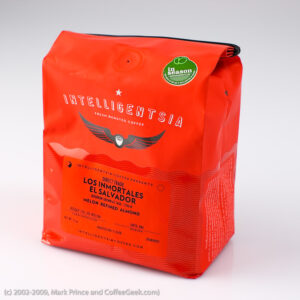
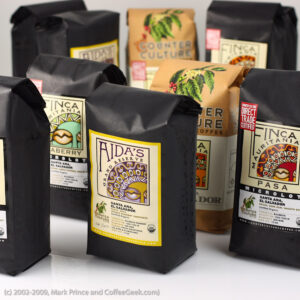
(Re)Defining Single Origin
All of these definitions can be intermixed. For instance, you could have a Single Origin Coffee for Espresso from a Microlot. You could have a Single Origin Blend for drip coffee with the same coffee processed 3 different ways, then post-roast blended. You could have a Single Origin coffee processed 3 different ways, but pre blended before roasting.
I have been a roaster’s apprentice for almost two years now and I even find these things confusing. I can’t imagine how a coffee consumer would feel. I do like Prince’s attempt to define what Single Origin is in simple and easy to understand terms but I feel it is too limiting. I’d like to present a more broad definition that the coffee buying public can still grasp.
Single Origin Coffee – 2010: a selection of coffee beans from a single coffee farm, processed one way, and roasted with one roast profile.
The idea behind this definition is that you highlight the coffee as much as possible, and present a coffee with a certain amount of clarity in its taste. It could be a micolot, it could be a specific processing method, or it could be a general selection of beans from an entire 20 acre farm, but it is still, by (my) definition a Single Origin.
If the coffee is from a coop of several tightly business-connected farms, should it be called a Single Origin? I don’t think so. If the coffee is roasted with different roast profiles and post blended, does that still follow the spirit of the concept of Single Origin? Many people think so (my boss does!), but since roast profiles can change the taste of almost any coffee I feel this takes away from the spirit and intent of Single Origin as a title and definition. If the goal of promoting Single Origin is to get consumers thinking about terroir, farmers, specific tastes, and growing practices, once you muddy up the taste with different roasting profiles, perhaps you lose the meaning.
For that, we could have:
Single Origin Roast Blended – 2010: a selection of coffee beans from a single coffee farm, processed one or multiple ways, roasted with multiple roast profiles.
This definition helps keep the spirit of promoting one farm’s coffee but it also explores the taste potential of the coffee depending on how the green coffee was processed and how it was roasted. It could also help the public understand what we in the industry know very well: different processing affects the taste of coffee, and different roast profiles do the same.
Lastly, we could have
Single Origin, Roasted for Espresso – 2010 A selection of coffee beans from a single coffee farm, processed one or multiple ways, roasted with one or more roast profiles to be brewed as espresso.
A lot of our customers take our Single Origin coffees roasted for drip or French press and put them into their espresso machines. Some like the results, some do not. But we also roast some of these Single Origin coffees from time to time with a very precise profile for espresso brewing. In those cases, our customers find that coffee to be much more appropriate for the brewing method. This is something we debate often at the roastery. We wished more companies educated their customers on how roast profiles can be tailored for a specific brewing method and what works for one style of brewing may be detrimental for other methods.
Since Single Origin espresso is so popular right now, a little education with the buying public could go a long way. But perhaps that is another article.











